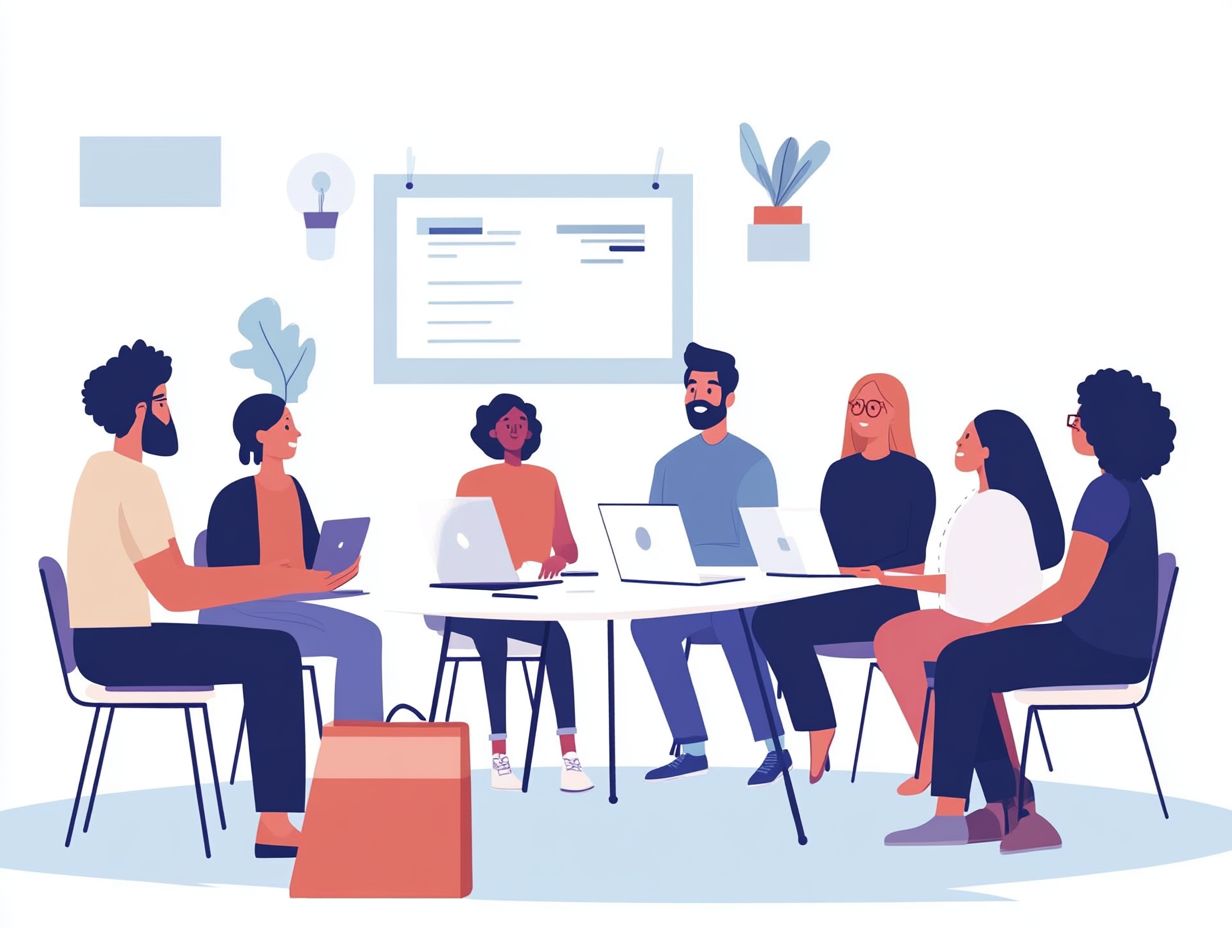“Understanding Different Learning Styles in CRM Training”
In today s fast-paced business landscape, mastering effective Customer Relationship Management (CRM) training is crucial for your success.
When it comes to learning, one size certainly doesn’t fit all. Acknowledging and adapting to various learning styles be it visual, auditory, hands-on, or a combination of these is essential for enhancing training outcomes.
This article delves into the importance of understanding these learning styles within the context of CRM training. It offers valuable insights into their distinct characteristics and the most effective methods for engaging each type.
By customizing your approach, you can empower every team member to excel in mastering CRM tools and strategies.
Contents
- Key Takeaways:
- The Importance of Understanding Learning Styles
- Visual Learners
- Auditory Learners
- Kinesthetic Learners
- Combination Learners
- Designing Effective CRM Training for Different Learning Styles
- Frequently Asked Questions
- What are the different learning styles in CRM training?
- How does understanding learning styles benefit CRM training?
- What are some strategies for accommodating different learning styles in CRM training?
- How can I determine my own learning style?
- Can individuals have a combination of different learning styles?
- What are some potential challenges when catering to different learning styles in CRM training?
Key Takeaways:

- Understanding different learning styles boosts CRM training effectiveness.
- Visual learners benefit from diagrams and videos.
- Auditory learners thrive on discussions and lectures.
- Hands-on activities are essential for hands-on learners.
What is CRM Training?
CRM training is essential if you are working with systems like Dynamics 365. This training focuses on enhancing your skills in Customer Relationship Management and employs a variety of instructional approaches designed to boost user engagement and effectiveness in managing customer interactions.
Investing in comprehensive training materials and well-structured sessions can elevate your team’s skills in utilizing CRM systems significantly.
Understanding the different training methods available allows you to tailor your approach to the specific needs of your workforce, enhancing training effectiveness.
When your team is well-trained, they are better prepared to foster positive customer relationships, drive sales, and streamline operations, leading to improved business outcomes.
Adapting training techniques to accommodate various learning styles reinforces knowledge and enables employees to fully harness the potential of the CRM tools at their disposal.
The Importance of Understanding Learning Styles
Understanding learning styles is essential for designing personalized training programs that cater to diverse preferences, ultimately enhancing effective learning outcomes.
Recognizing that some individuals are visual learners, others auditory learners, and still others hands-on learners can help create training experiences that are more engaging and relevant to each learner’s unique needs.
This approach transforms the learning experience, making it more impactful and effective for everyone involved.
Why Learning Styles Matter in CRM Training
Learning styles play a crucial role in shaping CRM training, as they directly affect the effectiveness of various training approaches and influence overall learner engagement.
Customizing CRM training to cater to visual, auditory, and hands-on learners can significantly improve knowledge retention and ensure that your training objectives are achieved.
If you identify as a visual learner, graphical representations such as charts and infographics are incredibly beneficial. These tools can simplify complex CRM data, making it easier for you to grasp the information quickly.
For auditory learners, interactive discussions, podcasts, or webinars can be game-changers. Engaging in dialogue and sharing insights allows for a deeper comprehension of concepts.
If you lean towards hands-on learning, incorporating real-world scenarios or role-playing exercises is essential. These activities allow you to engage physically with the material, which helps in internalizing CRM functionalities more effectively.
These targeted training methods not only create a more inclusive learning environment but also greatly enhance overall engagement and retention rates, ensuring proficiency in utilizing CRM systems effectively.
Visual Learners
Visual learners thrive when training methods embrace visual aids and multimedia elements.
Incorporating infographics, charts, and videos can enhance your understanding and retention of information. By leveraging these visual tools, trainers can convey complex concepts clearly and boost engagement, making the learning experience both effective and enjoyable.
Consider using color-coded charts or interactive video tutorials to further support visual learners in CRM training.
Explore our CRM training options today to enhance your team s performance!
Characteristics and Best Training Methods

Visual learners often thrive in environments that cater to their unique preferences for visual representations of information. They flourish when educational strategies emphasize graphics and visual elements.
For these learners, effective training methods include:
- Diagrams
- Interactive simulations
- Scenario-based training
You ll find that these individuals absorb information best when it’s presented in vibrant formats, such as infographics and videos, rather than through dense, text-heavy materials.
Take Customer Relationship Management (CRM) training, for instance. Using flowcharts to illustrate customer journey mapping can significantly enhance understanding, allowing learners to visualize the process effortlessly.
Using role-playing with simulation software makes the training interactive and fun, helping you learn better.
By weaving visual cues into the learning process, you ll make it easier for these learners to recall and apply knowledge in practical situations, ultimately leading to improved performance in real-world applications.
Auditory Learners
You thrive in environments where auditory cues and verbal instruction take center stage, making training programs that incorporate podcasts, webinars, and discussions especially effective for you.
By utilizing sound-based teaching methods, trainers can significantly enhance your understanding and retention of knowledge, catering to your unique learning style.
Auditory learners excel at absorbing information through listening and verbal communication. They thrive in environments that utilize teaching methods featuring auditory inputs and interactive dialogue.
To effectively engage these learners, consider incorporating:
- Discussions
- Role-playing scenarios
- Audiobooks that align with your learning objectives
Integrating podcasts related to CRM can greatly enhance their learning experience, offering real-world examples and expert insights that resonate. Small group discussions further allow these learners to participate in collaborative dialogue, solidifying their understanding of concepts through peer interaction.
Utilizing techniques like storytelling can captivate auditory learners, making abstract ideas more relatable and memorable. Implement auditory cues during training, like music or sound effects, to create an engaging atmosphere that captures attention and boosts retention.
By focusing on these tailored approaches, CRM training becomes not only more effective but also a more enjoyable experience for auditory learners.
Kinesthetic Learners
Kinesthetic learners excel when they can immerse themselves in hands-on experiences and engage actively. For you, experiential learning approaches are vital in CRM training, as they align perfectly with your unique learning preferences.
Training programs with scenario-based learning, role-playing, and real-life simulations truly bring the training to life!
Kinesthetic learners thrive on movement, physical activities, and real-world applications of knowledge. To truly engage them, you need to employ training methods that prioritize interactive simulations and practical exercises.
By incorporating hands-on activities, you can significantly enhance their learning experience.
These individuals flourish in environments where they can feel, touch, and manipulate materials. Activities like role-playing, lab experiments, or even field trips are essential for keeping them engaged.
For instance, simulating real-life scenarios whether it’s conducting science experiments or participating in team-building exercises can greatly boost both understanding and retention.
Using tools like model building or interactive digital platforms allows them to connect theoretical concepts with tangible experiences, reinforcing their learning in ways that traditional lectures simply can’t match.
Through these varied methods, kinesthetic learners not only enjoy their training but also leave with a deeper understanding of the subject matter.
Try these methods in your next training session for better results!
Combination Learners

Combination learners showcase a variety of learning styles, encompassing visual, auditory, and kinesthetic elements. This diversity calls for tailored training strategies that effectively address their multifaceted needs.
By integrating a variety of instructional methods, you can craft engaging and impactful training experiences that resonate with these learners.
Characteristics and Best Training Methods
Combination learners often flourish in training environments that embrace a variety of methods. Blending videos and images, collaborative learning, and personalized approaches caters to their diverse learning preferences.
This rich collection of techniques enhances both engagement and knowledge retention.
You ll find that these learners gain substantial benefits from programs that weave in interactive elements, allowing them to absorb information through visual, auditory, and kinesthetic channels. Picture a training program where video tutorials bring concepts to life, followed by vibrant group discussions and hands-on projects to solidify understanding.
Incorporating technology like virtual reality can elevate experiential learning, crafting immersive scenarios that engage multiple senses. Programs that prioritize team collaboration not only deepen comprehension but also foster essential interpersonal skills, showcasing how combination learners excel when training is thoughtfully tailored to their needs.
Designing Effective CRM Training for Different Learning Styles
Designing effective CRM training that caters to various learning styles is essential for achieving successful outcomes and maximizing learner retention.
By employing educational strategies customized to meet each learner’s unique needs, you can cultivate a more engaging and impactful learning environment.
Strategies for Incorporating Different Learning Styles
Incorporar diferentes estilos de aprendizaje en su capacitaci n de CRM requiere una mezcla estrat gica de t cnicas dise adas para atender diversas preferencias de los aprendices, asegurando un enfoque integral para la entrega del conocimiento.
Podr a considerar estrategias que incluyan la integraci n de tecnolog a, m todos de instrucci n variados y t cticas de participaci n que resuenen con cada aprendiz.
Por ejemplo, si tiene aprendices visuales en su grupo, probablemente se beneficiar n de infograf as y tutoriales en video que aclaran procesos complejos. Por otro lado, los aprendices auditivos se involucrar n m s profundamente cuando se expongan a podcasts y discusiones en grupo.
Los aprendices kinest sicos realmente prosperan a trav s de actividades pr cticas, como simulaciones del sistema de CRM, que les permiten aplicar su conocimiento en escenarios en tiempo real.
Incorporar t cnicas de gamificaci n, que significa utilizar elementos de juego, como cuestionarios y ejercicios de interpretaci n de roles, apelar a los aprendices competitivos y aumentar la participaci n general.
Utilizar sistemas de gesti n del aprendizaje que rastreen el progreso y personalicen los caminos de aprendizaje asegura que cada individuo pueda interactuar con el material de la manera que m s le convenga, mejorando en ltima instancia la retenci n del conocimiento en general.
Frequently Asked Questions
What are the different learning styles in CRM training?

There are several different learning styles that individuals may have, including visual, auditory, and kinesthetic. Visual learners prefer to process information through images and diagrams, auditory learners prefer to learn through listening, and kinesthetic learners prefer hands-on learning experiences.
How does understanding learning styles benefit CRM training?
Understanding different learning styles can help trainers personalize the training experience and cater to the specific needs of each individual. This can lead to better retention of information and a more efficient learning process.
What are some strategies for accommodating different learning styles in CRM training?
To accommodate different learning styles, use a variety of teaching methods. Incorporate visual aids and examples, provide opportunities for discussion and group work, and offer hands-on activities for learners who prefer practical engagement.
How can I determine my own learning style?
Many online quizzes can help you find your learning style. You can also think about your own preferences and experiences to identify which style fits you best.
Can individuals have a combination of different learning styles?
Absolutely! Many people have a mix of learning styles. This is why trainers should use a variety of methods to meet the needs of all learners.
What are some potential challenges when catering to different learning styles in CRM training?
Finding the right balance in teaching methods can be tricky. Trainers must engage all learners and ensure everyone can fully participate.






